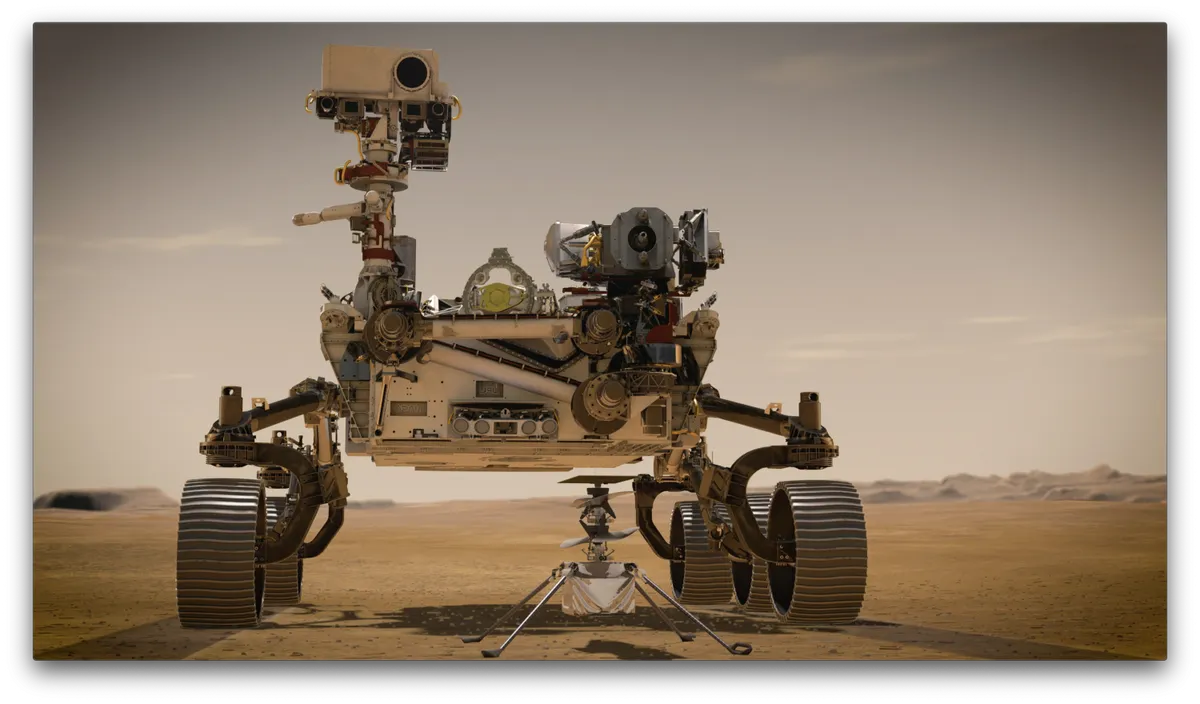NASA's newest Mars rover, Perseverance, has successfully launched on its journey to the Red Planet, where it will search for signs of ancient life.
Perseverance rover will explore the Martian landscape, looking for signs that life may once have existed on the planet back when it was warm and and wet. The rover will also examine the geology at Jezero Crater on Mars and help NASA understand more about rover technologies.
The rover was accompanied on its launch by the Ingenuity Mars Helicopter, which will explore the Red Planet from above ground. Both lifted off at 11:50 UTC, 30 July 2020, on an Atlas V rocket from Cape Canaveral Air Force Station in Florida.
The Mars 2020 mission payload sent its first signal to NASA ground control at 13:15 UTC, confirming all was well with the launch.
Read more:
- Mars 2020: the new missions heading for the Red Planet
- How ExoMars 2020 will search for signs of life on the Red Planet
- What did astronomers believe about Mars before the Space Age?

"With the launch of Perseverance, we begin another historic mission of exploration," says NASA Administrator Jim Bridenstine.
"This amazing explorer’s journey has already required the very best from all of us to get it to launch through these challenging times. Now we can look forward to its incredible science and to bringing samples of Mars home even as we advance human missions to the Red Planet. As a mission, as an agency, and as a country, we will persevere."
Perseverance's mission is to seek out signs that Mars may once have hosted any kind of life throughout its ancient history. It is also able to collect geological samples for future missions to collect and return to Earth.
There is about 290 million miles between us and Mars. But if there was ever a team that could make it happen, it is this one. We are going to Jezero Crater. We will see you there Feb. 18, 2021.
John McNamee, Mars 2020 project manager, NASA's Jet Propulsion Laboratory.
This would enable the samples to be analysed using technology too unwieldy to send to Mars for in-situ analysis.
"Jezero Crater is the perfect place to search for signs of ancient life," says Thomas Zurbuchen, associate administrator for NASA’s Science Mission Directorate.
"Perseverance is going to make discoveries that cause us to rethink our questions about what Mars was like and how we understand it today.
"As our instruments investigate rocks along an ancient lake bottom and select samples to return to Earth, we may very well be reaching back in time to get the information scientists need to say that life has existed elsewhere in the universe."
Breathing in the Martian air?
Perseverance is fitted with an instrument called MOXIE (Mars Oxygen In-Situ Resource Utilization Experiment), which will be testing whether it's possible to convert Martian carbon dioxide into oxygen.
If successful, it could provide scientists with a information about how to convert CO2 into breathable oxygen for future Martian astronauts and fuel for spacecraft.
The other fascinating aspect of the Mars 2020 payload is the Ingenuity Mars Helicopter, which will remain attached to Perseverance throughout the journey to Mars and also for the first 60 days the rover spends on the surface of the Red Planet. Its purpose is as a flight test, as the helicopter carries no science instruments.
The helicopter will attempt up to 5 flights throughout the mission, which will provide data for engineers to begin planning the next generation of Mars helicopters that could search for rovers and human crews, transport payloads or investigate hard-to-reach locations.

"Perseverance is the most capable rover in history because it is standing on the shoulders of our pioneers Sojourner, Spirit, Opportunity, and Curiosity," says Michael Watkins, director of NASA’s Jet Propulsion Laboratory in Southern California.
"In the same way, the descendants of Ingenuity and MOXIE will become valuable tools for future explorers to the Red Planet and beyond."
"There is still a lot of road between us and Mars," says John McNamee, Mars 2020 project manager at JPL.
"About 290 million miles of them. But if there was ever a team that could make it happen, it is this one. We are going to Jezero Crater. We will see you there Feb. 18, 2021."
Find out more about the mission via the NASA Mars 2020 website.Iain Todd is BBC Sky at Night Magazine's Staff Writer.
